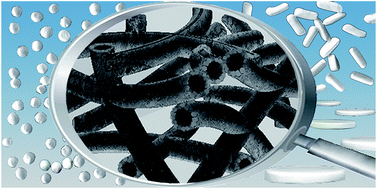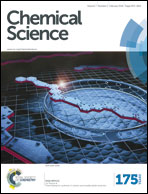A bioscaffolding strategy for hierarchical zeolites with a nanotube-trimodal network†
Abstract
Hierarchical zeolite monoliths with multimodal porosity are of paramount importance as they open up new horizons for advanced applications. So far, hierarchical zeolites based on nanotube scaffolds have never been reported. Inspired by the organization of biominerals, we have developed a novel precursor scaffolding-solid phase crystallization strategy for hierarchical zeolites with a unique nanotube scaffolding architecture and nanotube-trimodal network, where biomolecular self-assembly (BSA) provides a scaffolding blueprint. By vapor-treating Sil-1 seeded precursor scaffolds, zeolite MFI nanotube scaffolds are self-generated, during which evolution phenomena such as segmented voids and solid bridges are observed, in agreement with the Kirkendall effect in a solid-phase crystallization system. The nanotube walls are made of intergrown single crystals rendering good mechanical stability. The inner diameter of the nanotube is tunable between 30 and 90 nm by varying the thickness of the precursor layers. Macropores enclosed by cross-linked nanotubes can be modulated by the choice of BSA. Narrow mesopores are formed by intergrown nanocrystals. Hierarchical ZSM-5 monoliths with nanotube (90 nm), micropore (0.55 nm), mesopore (2 nm) and macropore (700 nm) exhibit superior catalytic performance in the methanol-to-hydrocarbon (MTH) conversion compared to conventional ZSM-5. BSA remains intact after crystallization, allowing a higher level of organization and functionalization of the zeolite nanotube scaffolds. The current work may afford a versatile strategy for hierarchical zeolite monoliths with nanotube scaffolding architectures and a nanotube-multimodal network leading to self-supporting and active zeolite catalysts, and for applications beyond.


 Please wait while we load your content...
Please wait while we load your content...